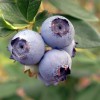 This 8-page fact sheet provides updated information about the recent trends in blueberry production, consumption, and trade for the US market. Current and future short-term trends are discussed. Price analysis at the wholesale level for selected markets on the US East Coast (New York City) and US West Coast (Los Angeles) are presented. Also, the national average retail prices for conventional and organic blueberries are presented. Written by Edward A. Evans and Fredy H. Ballen, and published by the UF Department of Food and Resource Economics, October 2014.
This 8-page fact sheet provides updated information about the recent trends in blueberry production, consumption, and trade for the US market. Current and future short-term trends are discussed. Price analysis at the wholesale level for selected markets on the US East Coast (New York City) and US West Coast (Los Angeles) are presented. Also, the national average retail prices for conventional and organic blueberries are presented. Written by Edward A. Evans and Fredy H. Ballen, and published by the UF Department of Food and Resource Economics, October 2014.
http://edis.ifas.ufl.edu/fe952
Category: Crops
Converting from seepage irrigation to plasticulture for vegetable production: a case study and on-farm demonstration
 Cabbage production in Florida has been dominated by the use of seepage or sub-irrigation, because it is inexpensive to maintain and simple to use, but it can require vast quantities of water to be pumped from the aquifer in low rainfall years. Plasticulture has been proposed as an alternative production method for cabbage production in Florida. An on-farm demonstration was setup on Greene’s Farms in Bunnell, FL to provide a platform for collaboration between researchers, growers and extension professionals. This 6-page fact sheet illustrates an innovative approach converting from seepage irrigation to plasticulture and points out some options and challenges for growers considering a plasticulture system. Written by Charles E. Barrett, Lincoln Zotarelli, Brian S. Taylor, Lucas G. Paranhos, and Mark Warren, and published by the UF Department of Horticultural Sciences, July 2014.
Cabbage production in Florida has been dominated by the use of seepage or sub-irrigation, because it is inexpensive to maintain and simple to use, but it can require vast quantities of water to be pumped from the aquifer in low rainfall years. Plasticulture has been proposed as an alternative production method for cabbage production in Florida. An on-farm demonstration was setup on Greene’s Farms in Bunnell, FL to provide a platform for collaboration between researchers, growers and extension professionals. This 6-page fact sheet illustrates an innovative approach converting from seepage irrigation to plasticulture and points out some options and challenges for growers considering a plasticulture system. Written by Charles E. Barrett, Lincoln Zotarelli, Brian S. Taylor, Lucas G. Paranhos, and Mark Warren, and published by the UF Department of Horticultural Sciences, July 2014.
http://edis.ifas.ufl.edu/hs1246
Description of Enhanced-Efficiency Fertilizers for Use in Vegetable Production
 In response to the Federal Clean Water Act of 1972 and the Florida Restoration Act of 1999, a series of best management practices (BMPs) was implemented to improve surface and ground water quality. BMPs are cultural practices that, when implemented as a plan, help reduce the environmental impact of production while maintaining yield and quality. One of these BMPs includes the use of controlled-release fertilizer, which is an enhanced-efficiency fertilizer. This publication describes the common enhanced-efficiency fertilizers and the factors affecting their use in Florida vegetable production. This 9-page fact sheet was written by Luther Carson and Monica Ozores-Hampton, and published by the UF Department of Horticultural Sciences, October 2014.
In response to the Federal Clean Water Act of 1972 and the Florida Restoration Act of 1999, a series of best management practices (BMPs) was implemented to improve surface and ground water quality. BMPs are cultural practices that, when implemented as a plan, help reduce the environmental impact of production while maintaining yield and quality. One of these BMPs includes the use of controlled-release fertilizer, which is an enhanced-efficiency fertilizer. This publication describes the common enhanced-efficiency fertilizers and the factors affecting their use in Florida vegetable production. This 9-page fact sheet was written by Luther Carson and Monica Ozores-Hampton, and published by the UF Department of Horticultural Sciences, October 2014.
http://edis.ifas.ufl.edu/hs1247
2014 Cool-Season Forage Variety Recommendations for Florida
 This 4-page fact sheet provides the most up-to-date information on current adapted varieties of cool-season forages. The recommendation of varieties is based on multi-location, multi-year cultivar evaluation experiments that may include trials in Georgia and other states. Table 1 includes information about the planting dates, seeding rates, and other considerations. If you have questions about a particular variety, contact your local UF/IFAS Extension agent for additional information. Written by A. R. Blount, J. M. B. Vendramini, J. C. B. Dubeux, Md A. Babar, K. E. Kenworthy, P. R. Muñoz,and K. H. Quesenberry, and published by the UF Department of Agronomy, September 2014. (UF/IFAS Photo: Josh Wickam)
This 4-page fact sheet provides the most up-to-date information on current adapted varieties of cool-season forages. The recommendation of varieties is based on multi-location, multi-year cultivar evaluation experiments that may include trials in Georgia and other states. Table 1 includes information about the planting dates, seeding rates, and other considerations. If you have questions about a particular variety, contact your local UF/IFAS Extension agent for additional information. Written by A. R. Blount, J. M. B. Vendramini, J. C. B. Dubeux, Md A. Babar, K. E. Kenworthy, P. R. Muñoz,and K. H. Quesenberry, and published by the UF Department of Agronomy, September 2014. (UF/IFAS Photo: Josh Wickam)
http://edis.ifas.ufl.edu/aa266
A Farm to School Procurement Calculator for Specialty Crop Producers and School Food Service Staff
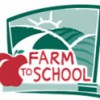 Florida Farm to School programs are designed to connect producers with schools. But school food service staff make their purchasing decisions in terms of servings and producers pack their products by weight. General calculators and guides designed for national Farm to School programs don’t address Florida’s diverse production of fresh fruits and vegetables. This procurement calculator and guide for Florida Farm to School programs was written by Jonathan A. Watson, Danielle Treadwell, Anna Prizzia, and Kelli Brew, and published by the UF Department of Horticultural Sciences, September 2014.
Florida Farm to School programs are designed to connect producers with schools. But school food service staff make their purchasing decisions in terms of servings and producers pack their products by weight. General calculators and guides designed for national Farm to School programs don’t address Florida’s diverse production of fresh fruits and vegetables. This procurement calculator and guide for Florida Farm to School programs was written by Jonathan A. Watson, Danielle Treadwell, Anna Prizzia, and Kelli Brew, and published by the UF Department of Horticultural Sciences, September 2014.
http://edis.ifas.ufl.edu/hs1250
Jalapeño and Other Hot Pepper Varieties for Florida
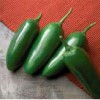
The jalapeño is derived from the Capsicum genus of the family Solanaceae. Jalapeños are members of a diverse group, which also include ancho poblano, cayenne, serrano, Anaheim, banana, Asian, habanero, and Hungarian wax peppers. Hot peppers are classified by their heat and shape. The heat of the pepper comes from the chemical compound capsaicin, which is measured by the Scoville scale. This 8-page fact sheet is a guide of jalapeño and other hot pepper varieties used in Florida was written by Monica Ozores-Hampton and Gene McAvoy, and published by the UF Department of Horticultural Sciences, October 2014.
http://edis.ifas.ufl.edu/hs1241
Growth Stages and Tuber Development of FL1867 Potato under Full and Reduced Irrigation Scheduling
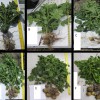 The potato cultivar ‘Frito Lay 1867’ (‘FL 1867’) is a popular chipping variety grown across Florida and the southern United States. Knowledge of the timing and duration of the tuber initiation and tuber bulking stages for ‘FL 1867’ is critical for timing fertilizer and irrigation applications. So to evaluate the start and length of the tuber initiation and tuber bulking stages under Florida growing conditions, ‘FL 1867’ plants were dug up and photographed on a weekly basis from a commercial field near Live Oak, FL in 2012. This 3-page fact sheet was written by Seth A. Byrd, Diane L. Rowland, and Lincoln Zotarelli, and published by the UF Department of Agronomy, September 2014.
The potato cultivar ‘Frito Lay 1867’ (‘FL 1867’) is a popular chipping variety grown across Florida and the southern United States. Knowledge of the timing and duration of the tuber initiation and tuber bulking stages for ‘FL 1867’ is critical for timing fertilizer and irrigation applications. So to evaluate the start and length of the tuber initiation and tuber bulking stages under Florida growing conditions, ‘FL 1867’ plants were dug up and photographed on a weekly basis from a commercial field near Live Oak, FL in 2012. This 3-page fact sheet was written by Seth A. Byrd, Diane L. Rowland, and Lincoln Zotarelli, and published by the UF Department of Agronomy, September 2014.
http://edis.ifas.ufl.edu/ag388
University of Florida Potato Variety Trial Program: 'Elkton' Commercial Evaluation
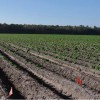 The ‘Elkton’ chipping potato variety was tested on a commercial scale at two growers’ farms in Florida during the 2011 season. The average yield of ‘Elkton’ in the commercial trials ranged between 295 and 324 cwt/ac, an average of 11 percent higher than that of the standard ‘Atlantic,’ and comparable to the yield range obtained in 19 trials conducted over a nine-year period by the University of Florida. This 4-page fact sheet was written by Lincoln Zotarelli, Douglas Gergela, and Dana Fourman, and published by the UF Department of Horticultural Sciences, October 2014.
The ‘Elkton’ chipping potato variety was tested on a commercial scale at two growers’ farms in Florida during the 2011 season. The average yield of ‘Elkton’ in the commercial trials ranged between 295 and 324 cwt/ac, an average of 11 percent higher than that of the standard ‘Atlantic,’ and comparable to the yield range obtained in 19 trials conducted over a nine-year period by the University of Florida. This 4-page fact sheet was written by Lincoln Zotarelli, Douglas Gergela, and Dana Fourman, and published by the UF Department of Horticultural Sciences, October 2014.
http://edis.ifas.ufl.edu/hs1253
Sugarcane Orange Rust
 In June 2007, rust symptoms were observed on sugarcane cultivar CP80-1743 about six miles east of Belle Glade, Florida. The disease was confirmed as orange rust of sugarcane. It is hypothesized that rust spores were blown into the region as a disperse spore cloud from an unknown source rather than spread from a single or several small focal points. This 7-page fact sheet was written by P. Rott, S. Sood, J. C. Comstock, R. N. Raid, N. C. Glynn, R. A. Gilbert, and H. S. Sandhu, and published by the UF Department of Agronomy, May 2014.
In June 2007, rust symptoms were observed on sugarcane cultivar CP80-1743 about six miles east of Belle Glade, Florida. The disease was confirmed as orange rust of sugarcane. It is hypothesized that rust spores were blown into the region as a disperse spore cloud from an unknown source rather than spread from a single or several small focal points. This 7-page fact sheet was written by P. Rott, S. Sood, J. C. Comstock, R. N. Raid, N. C. Glynn, R. A. Gilbert, and H. S. Sandhu, and published by the UF Department of Agronomy, May 2014.
http://edis.ifas.ufl.edu/sc099
Conventional and Specialty Eggplant Varieties in Florida
 Eggplants are members of the nightshade family Solanaceae. Cultural practices employed in eggplant production are similar to tomatoes and peppers. In south Florida, where winters are mild and freezes are infrequent, eggplants are planted from August to March. This 5-page fact sheet is a guide to eggplant varieties commonly used in Florida. Written by Monica Ozores-Hampton, and published by the UF Department of Horticultural Sciences, October 2014.
Eggplants are members of the nightshade family Solanaceae. Cultural practices employed in eggplant production are similar to tomatoes and peppers. In south Florida, where winters are mild and freezes are infrequent, eggplants are planted from August to March. This 5-page fact sheet is a guide to eggplant varieties commonly used in Florida. Written by Monica Ozores-Hampton, and published by the UF Department of Horticultural Sciences, October 2014.
http://edis.ifas.ufl.edu/hs1243
Peach Scab
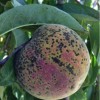 Peach scab is a disease caused by the fungus Cladosporium carpophilum. The pathogen can infect other fruits and nuts within the Prunus species, like almonds, apricots, nectarines, and plums. Peach scab is common during periods of humid weather because rain splashes the conidia (asexual spores) from the fungus between leaves, twigs, and fruit in the tree canopy, which spreads the disease. This 6-page fact sheet was written by Daniel Mancero-Castillo, Mercy Olmstead, and Phillip Harmon, and published by the UF Department of Horticultural Sciences, July 2014.
Peach scab is a disease caused by the fungus Cladosporium carpophilum. The pathogen can infect other fruits and nuts within the Prunus species, like almonds, apricots, nectarines, and plums. Peach scab is common during periods of humid weather because rain splashes the conidia (asexual spores) from the fungus between leaves, twigs, and fruit in the tree canopy, which spreads the disease. This 6-page fact sheet was written by Daniel Mancero-Castillo, Mercy Olmstead, and Phillip Harmon, and published by the UF Department of Horticultural Sciences, July 2014.
http://edis.ifas.ufl.edu/hs1249
Peanut Variety Performance in Florida, 2010–2013
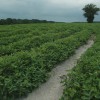 Variety choice is a critical management decision in producing a peanut crop. Since several good peanut varieties are available, it is essential to know each variety’s attributes and how different varieties might fit into a farm plan. This 7-page fact sheet provides data conducted from trials in Florida at UF/IFAS research centers located in Gainesville (Citra), Marianna, and Jay from 2010–2013. Written by Barry Tillman, Mark Gomillion, Justin McKinney, and George Person, and published by the UF Department of Agronomy, May 2014.
Variety choice is a critical management decision in producing a peanut crop. Since several good peanut varieties are available, it is essential to know each variety’s attributes and how different varieties might fit into a farm plan. This 7-page fact sheet provides data conducted from trials in Florida at UF/IFAS research centers located in Gainesville (Citra), Marianna, and Jay from 2010–2013. Written by Barry Tillman, Mark Gomillion, Justin McKinney, and George Person, and published by the UF Department of Agronomy, May 2014.
http://edis.ifas.ufl.edu/ag382
Pests and Fungal Organisms Identified on Olives (Olea europaea) in Florida
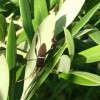 Olive production in Florida has increased over the last few years. As trees become available in nurseries many homeowners are planting them in their landscapes. Fortunately, olives are a relatively pest-free species, but some occasional invaders can be a nuisance or cause lasting harm. A few plant pathogens that may infect olives also can lead to a decline in overall plant health, fruit yield, or the visual appearance of plants. Following correct cultural practices when growing olives can reduce your chances of tree loss from pests and diseases. A survey of olive production and interviews with Florida growers in 2014 identified the pests and diseases described in this 5-page fact sheet, written by Jennifer L. Gillett-Kaufman, Sandra A. Allan, Jonael H. Bosques-Mendez, and Lyle J. Buss, and published by the UF Department of Entomology and Nematology, September 2014.
Olive production in Florida has increased over the last few years. As trees become available in nurseries many homeowners are planting them in their landscapes. Fortunately, olives are a relatively pest-free species, but some occasional invaders can be a nuisance or cause lasting harm. A few plant pathogens that may infect olives also can lead to a decline in overall plant health, fruit yield, or the visual appearance of plants. Following correct cultural practices when growing olives can reduce your chances of tree loss from pests and diseases. A survey of olive production and interviews with Florida growers in 2014 identified the pests and diseases described in this 5-page fact sheet, written by Jennifer L. Gillett-Kaufman, Sandra A. Allan, Jonael H. Bosques-Mendez, and Lyle J. Buss, and published by the UF Department of Entomology and Nematology, September 2014.
http://edis.ifas.ufl.edu/in1046
Costs and Benefits of More Efficient Irrigation Systems for Florida Chipping Potato Production
 The goal of this 11-page fact sheet is to help producers and other interested parties understand how alternative irrigation systems can affect economic outcomes in agricultural operations. We used chipping potato production in the Hastings area in northeast Florida as an example to discuss factors to consider when selecting an irrigation system. Written by Jenna Rogers, Tatiana Borisova, Lincoln Zotarelli, Kelly Grogan, Jeffrey Ullman, Jessica Bertine, and Kelly Morgan, and published by the UF Department of Food and Resource Economics, September 2014.
The goal of this 11-page fact sheet is to help producers and other interested parties understand how alternative irrigation systems can affect economic outcomes in agricultural operations. We used chipping potato production in the Hastings area in northeast Florida as an example to discuss factors to consider when selecting an irrigation system. Written by Jenna Rogers, Tatiana Borisova, Lincoln Zotarelli, Kelly Grogan, Jeffrey Ullman, Jessica Bertine, and Kelly Morgan, and published by the UF Department of Food and Resource Economics, September 2014.
http://edis.ifas.ufl.edu/fe953
Heirloom Eggplant Varieties in Florida
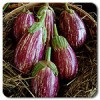 Eggplant has a colorful heritage. It was first domesticated more than 4,000 years ago. Ancient Chinese crossbred varieties with different shapes and colors. It migrated to Egypt during the 9th to 12th centuries AD, the Moors introduced eggplant to the Spanish, who took the eggplant to South America around 1650, and in 1806, Thomas Jefferson introduced the eggplant to the United States after receiving the fruit from a friend in France. As opposed to the modern-day hybrid cultivars, heirlooms are old cultivars generated by handing down seeds from generation to generation. This 6-page fact sheet is a guide to heirloom eggplant varieties used in Florida. Written by Monica Ozores-Hampton, and published by the UF Department of Horticultural Sciences, November 2014.
Eggplant has a colorful heritage. It was first domesticated more than 4,000 years ago. Ancient Chinese crossbred varieties with different shapes and colors. It migrated to Egypt during the 9th to 12th centuries AD, the Moors introduced eggplant to the Spanish, who took the eggplant to South America around 1650, and in 1806, Thomas Jefferson introduced the eggplant to the United States after receiving the fruit from a friend in France. As opposed to the modern-day hybrid cultivars, heirlooms are old cultivars generated by handing down seeds from generation to generation. This 6-page fact sheet is a guide to heirloom eggplant varieties used in Florida. Written by Monica Ozores-Hampton, and published by the UF Department of Horticultural Sciences, November 2014.
http://edis.ifas.ufl.edu/hs1242
Weed Management Principles in Commercial Vegetable Production
 Weeds compete with vegetable crops for light, water, and nutrients. This competition decreases plant vigor, yield, and crop quality. They interfere with hand harvest and can complicate or prevent machine harvest. Weeds also serve as alternative hosts to diseases, viruses, and nematodes. A successful weed management program will incorporate multiple control practices with preventative, cultural, biological, mechanical, and chemical methods.
Weeds compete with vegetable crops for light, water, and nutrients. This competition decreases plant vigor, yield, and crop quality. They interfere with hand harvest and can complicate or prevent machine harvest. Weeds also serve as alternative hosts to diseases, viruses, and nematodes. A successful weed management program will incorporate multiple control practices with preventative, cultural, biological, mechanical, and chemical methods.
This 6-page fact sheet was written by Peter Dittmar and Nathan Boyd, and published by the UF Department of Horticultural Sciences, July 2014.
http://edis.ifas.ufl.edu/cv113
Water Use for Seepage-Irrigated Watermelon with Plastic Mulch in Florida
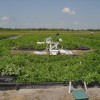 In Florida, watermelon is an important crop that accounts for a significant part of the state’s agricultural water use. Depending on the type of production system and climate, the water use of this crop can vary. In Florida, watermelon is predominantly grown on raised plastic-mulched beds. To develop improved water management and allocation plans, accurate water use estimates for watermelon are needed. Seepage irrigation under plastic mulch is a common production system used to produce watermelon in south and northeast Florida where the water table is shallow. Plastic mulch alters the rainfall entry and soil temperature of the raised beds and can significantly affect evapotranspiration. As there is no information on seepage-irrigated watermelon grown on plastic mulch for subtropical Florida, this 4-page fact sheet summarizes the results from a crop water use study for the seepage-irrigated watermelon in south Florida. Written by Sanjay Shukla and Niroj K. Shrestha, and published by the UF Department of Agricultural and Biological Engineering, August 2014.
In Florida, watermelon is an important crop that accounts for a significant part of the state’s agricultural water use. Depending on the type of production system and climate, the water use of this crop can vary. In Florida, watermelon is predominantly grown on raised plastic-mulched beds. To develop improved water management and allocation plans, accurate water use estimates for watermelon are needed. Seepage irrigation under plastic mulch is a common production system used to produce watermelon in south and northeast Florida where the water table is shallow. Plastic mulch alters the rainfall entry and soil temperature of the raised beds and can significantly affect evapotranspiration. As there is no information on seepage-irrigated watermelon grown on plastic mulch for subtropical Florida, this 4-page fact sheet summarizes the results from a crop water use study for the seepage-irrigated watermelon in south Florida. Written by Sanjay Shukla and Niroj K. Shrestha, and published by the UF Department of Agricultural and Biological Engineering, August 2014.
http://edis.ifas.ufl.edu/ae510
Water Use for Seepage-Irrigated Pepper with Plastic Mulch in Florida
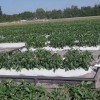 Bell pepper (Capsicum annuum) is an important crop for Florida and accounts for a significant fraction of its agricultural water use. Most of it is produced in south Florida, where the water table is shallow. Seepage irrigation is one of the most common systems used in south Florida for growing plastic-mulched vegetable crops, including bell pepper. Compared with an open field production, covering the soil with impermeable plastic reduces soil evaporation and increases transpiration. This 3-page fact sheet summarizes the results from a crop water use study for the seepage-irrigated pepper in south Florida.
Bell pepper (Capsicum annuum) is an important crop for Florida and accounts for a significant fraction of its agricultural water use. Most of it is produced in south Florida, where the water table is shallow. Seepage irrigation is one of the most common systems used in south Florida for growing plastic-mulched vegetable crops, including bell pepper. Compared with an open field production, covering the soil with impermeable plastic reduces soil evaporation and increases transpiration. This 3-page fact sheet summarizes the results from a crop water use study for the seepage-irrigated pepper in south Florida.
Written by Sanjay Shukla, Niroj Shrestha, and Fouad H. Jaber, and published by the UF Department of Agricultural and Biological Engineering, August 2014.
http://edis.ifas.ufl.edu/ae509
Water Use for Drip-Irrigated Watermelon with Plastic Mulch in Florida
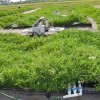 Watermelon is an important crop in Florida and accounts for a significant part of its agricultural water use. Watermelon is grown in open fields and on raised plastic-mulched beds, with the latter being the predominant production system in Florida. Accurate water use estimates for this crop are needed to develop better water allocation and management plans as well as for irrigation management. This publication summarizes the results from a crop water-use study for the drip-irrigated watermelon in south Florida. This 3-page fact sheet was written by Sanjay Shukla, Niroj K. Shrestha, Thomas A. Obreza, and Brian J. Boman, and published by the UF Department of Agricultural and Biological Engineering, August 2014.
Watermelon is an important crop in Florida and accounts for a significant part of its agricultural water use. Watermelon is grown in open fields and on raised plastic-mulched beds, with the latter being the predominant production system in Florida. Accurate water use estimates for this crop are needed to develop better water allocation and management plans as well as for irrigation management. This publication summarizes the results from a crop water-use study for the drip-irrigated watermelon in south Florida. This 3-page fact sheet was written by Sanjay Shukla, Niroj K. Shrestha, Thomas A. Obreza, and Brian J. Boman, and published by the UF Department of Agricultural and Biological Engineering, August 2014.
http://edis.ifas.ufl.edu/ae508
Factors Affecting Phosphorus Leaching and Groundwater Concentrations for the Plasticulture Vegetable-Production System
 Although Best Management Practices (BMPs) have been developed to reduce the loss of nutrients, like P, to the environment, limited information exists on the main factors that control P loss to Florida groundwater. For example, while it is generally accepted that both irrigation and fertilizer P impact groundwater P, growers often ask if controlling one is more advantageous than the other in their efforts to reduce P leaching. There exists no easy tool to link fertilizer P input and other factors to groundwater P concentration. This 5-page fact sheet uses long-term data (six growing seasons) from a farm in Immokalee, Florida, to explain the effects of soil and agronomic factors, along with seasonal rainfall, on groundwater P. From these factors are derived simple equations to predict groundwater P concentrations. Written by Sanjay Shukla, Gregory S. Hendricks, Thomas A. Obreza, and Willie Harris, and published by the UF Department of Agricultural and Biological Engineering, August 2014.
Although Best Management Practices (BMPs) have been developed to reduce the loss of nutrients, like P, to the environment, limited information exists on the main factors that control P loss to Florida groundwater. For example, while it is generally accepted that both irrigation and fertilizer P impact groundwater P, growers often ask if controlling one is more advantageous than the other in their efforts to reduce P leaching. There exists no easy tool to link fertilizer P input and other factors to groundwater P concentration. This 5-page fact sheet uses long-term data (six growing seasons) from a farm in Immokalee, Florida, to explain the effects of soil and agronomic factors, along with seasonal rainfall, on groundwater P. From these factors are derived simple equations to predict groundwater P concentrations. Written by Sanjay Shukla, Gregory S. Hendricks, Thomas A. Obreza, and Willie Harris, and published by the UF Department of Agricultural and Biological Engineering, August 2014.
http://edis.ifas.ufl.edu/ae507